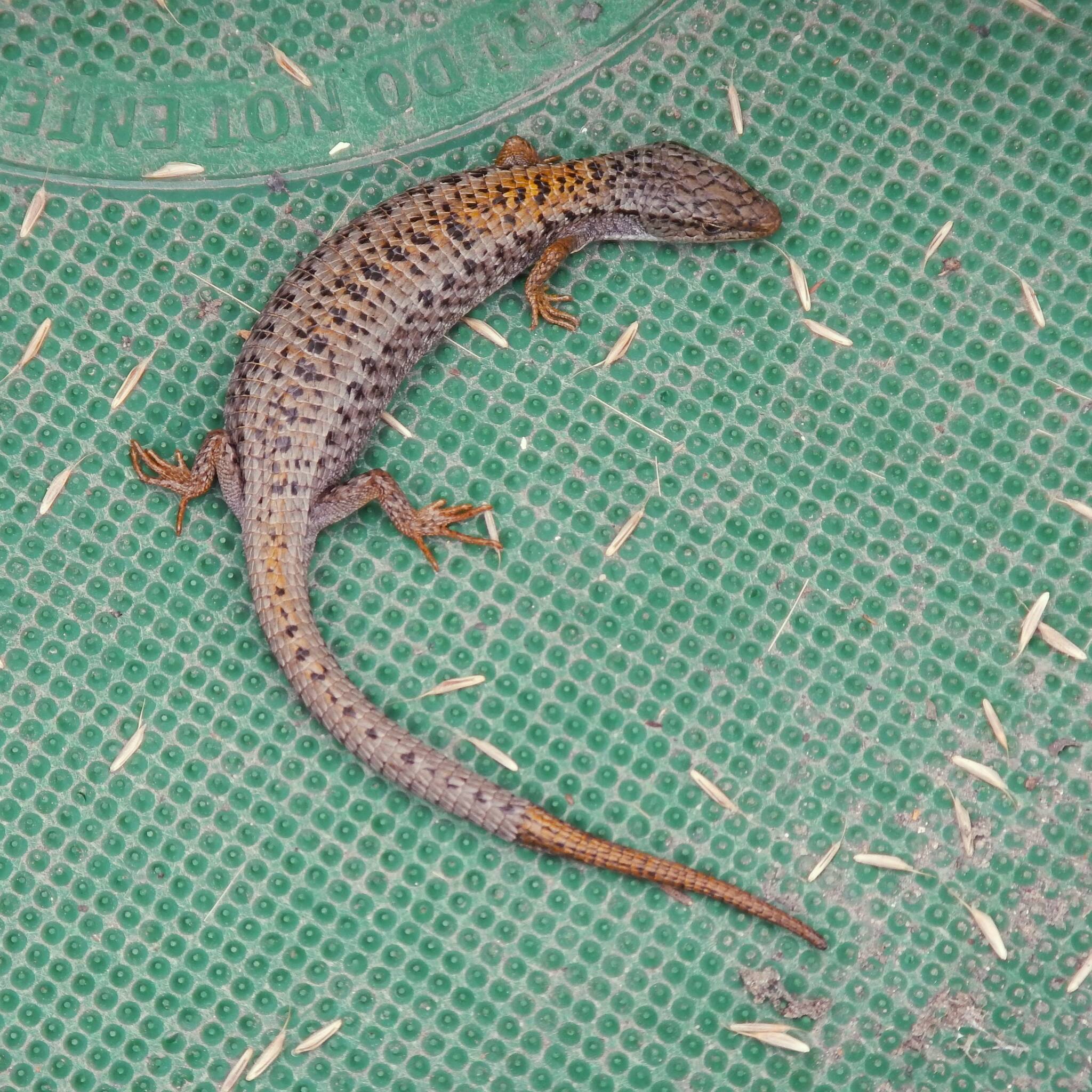by Russel Barsh
Director of Kwiaht.
As fall brings cooler weather, you may discover a scaly, uninvited lodger in your greenhouse or garden shed. Its head is narrow and pointy like a small snake and it can vanish in a flash, propelled by its long tail as well as four tiny legs…
Although it is most widespread and genetically diverse in California, this relatively large reptile is better adapted than other lizards to cool, wet weather in the Pacific Northwest, which it colonized from coastal Oregon sometime in the last 12,000 years. One adaptation to our climate is giving live birth rather than laying eggs. Another adaptation is brumation or torpor: Alligator Lizards can slow their metabolism and reduce activity levels in winter without hibernating. Nor are they picky eaters. They are equally content with moths, beetles, and other insects as well as slugs and snails, which they locate by smell, burrowing beneath rocks and logs.
If handled, or snatched by a predator, an Alligator Lizard can autotomize its tail, which will continue to twitch for some time while the rest of the lizard escapes. The tail regrows, but at a nontrivial metabolic cost; while they are quite harmless, then, it is best not to handle these reptiles.
Despite their ability to make rapid dashes for safety. Alligator Lizards are not travelers. They have small individual territories and form relatively small isolated, genetically distinct communities. Mating is brief and purely pragmatic. The male lizard latches onto the female’s head and clings to her until she accepts him. As far as we know, there is neither courtship nor any further interaction between the sexes. A male Alligator Lizard with a strong bite is assured of a better diet as well as a greater likelihood of passing on his genes!
Alligator Lizards are widely distributed around Orcas and San Juan Islands but absent from Lopez. This is not for lack of appropriate habitat. Lopez has plenty of natural rock outcrops, dry overgrown meadows, and rocky garden walls for sun-loving reptiles. Lopez has drier weather, too, on the whole. The answer is to be found in the way we believe that Alligator Lizards reached the islands from the mainland when the last continental glaciers melted thousands of years ago. Lizards neither swim nor fly; it is most likely that they arrived here by “rafting”—that is, catching rides on logjams blown out of spring-flooding mainland rivers. Drift logs have been aggressively cleared from rivers and bays for over a century to protect boats, but were once much more common.
By far the largest rivers feeding the seas around the San Juan Islands are the Fraser and Skagit. Both are about 25 sea miles from San Juan County, which could be a few hours of drift on a spring ebb tide. Rafts leaving the Fraser would be likely to beach on north Orcas or north and west San Juan Island. Rafts from the Skagit would be most likely to beach on Lopez, Decatur, Blakeley, Cypress or possibly East Orcas. The geographic distribution of Alligator Lizards suggests that they rafted down the Fraser and got no further.
Our laboratory recently compared the genotypes of San Juan Island’s Northern Flying Squirrels with the genotypes of Flyers on the mainland. They are a closer match to Flyers from the upper-Fraser watershed than Flyers from Skagit County, consistent with rafting down the Fraser to San Juan Island. Flyers are not found on Orcas or Lopez.
In both the San Juan and Gulf Islands, Alligator Lizards appear to be an important host for ticks, which do not carry any pathogens affecting reptiles. Alligator Lizards are easy targets since they are sluggish from February to April when Western Blacklegged Ticks are most actively questing and, unlike small mammals, lizards cannot groom ticks off their bodies. The epidemiological consequences of this are currently under study at our laboratory.
Alligator Lizards are too often the victims of lawnmowers and unleashed pets. They may also be at risk from rats, and from a recent invasion of the islands by the European Wall Lizard, which was introduced on Vancouver Island in the 1990s and is now also well-established on Orcas Island. Interaction between the two species is poorly understood at this time.
Let us know if you see one of these shy, sly reptiles; and help us ensure that the San Juan Islands’ native “alligators” continue to thrive!



